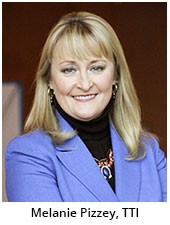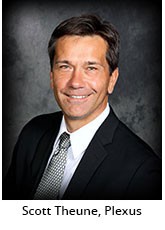Poorly Managed Excess Inventory Poses Threat to Supply Chain
07/03/2014 //
How selling to the open market jeopardizes the entire supply chain
A long-standing challenge in the electronics supply chain is the management of so-called ‘excess’ inventory. When an OEM or EMS provider orders too much product, it is often sold in the open market to distributors that are not franchised by component suppliers. The problems this creates for the authorized channel include the taint of counterfeit components in the electronics supply chain. Authorization—or franchises—are designed to protect suppliers, distributors and customers. From the customer standpoint, procuring product from an authorized distributor is similar to acquiring it directly from the supplier in terms of brand, quality and performance.
Authorization also enables distributors to take back a certain amount of product from OEM and EMS customers, which should limit the amount of inventory available to the open market. “At TE, we provide our authorized distributors with the ability to return excess and/or slow moving product,” said Canda Carr, Vice President of Global Sales for the Distribution Channel for TE Connectivity. “These products are returned to a TE authorized third party for inspection and disposition to include controlled reclamation.” Direct customers can also return inventory. At TE, the process for returning product is the same for distributors and direct customers. “However,” adds Carr, “the purpose for returns is very different. Direct customer returns are typically done as a courtesy, whereas our distributors are granted a scrap return as part of our distribution policy.” The value of the return allowance is usually based on a percentage of prior purchases, and is limited to products that are not non-cancellable or not returnable (NCNR) or otherwise unique to one customer.
Nevertheless, inventory is still sold in the open market, which increases risk for customers. Non-authorized distributors are not required to manage inventory the same way authorized distributors do; and counterfeit parts most often enter the supply chain through the open market. To combat counterfeits, the authorized channel is re-emphasizing the importance of direct-supplier relationships. “Counterfeiting persists because there are too many willing buyers and a number of ready sources profitably supplying products acquired outside the authorized commerce channels,” said John Denslinger, President and CEO for the Electronics Components Industry Association (ECIA).
The reality is, though, that some products – particularly obsolete devices – are occasionally only available through non-authorized channels. EMS providers procure such components at the customers’ behest. “Plexus Corp. has developed robust operating procedures, tools and training to ensure that we mitigate the risk associated with counterfeit or misrepresented material,” said Scott Theune, Vice President, Supply Chain, for Plexus. “Plexus strives to purchase components from the original component manufacturers through distribution or direct channels. In the rare event that we need to utilize an Independent, a complete risk analysis is performed.

The authorized channel recommends against customers buying and selling excess inventory, but both suppliers and distributors walk a fine line when it comes to ‘dictating’ to customers. Over the years, it has been suggested that liberalizing return policies could help limit excess. “Most suppliers have specific restrictions on returns for components that are considered ‘non-standard’ or built to a specific customer drawing,” explains Melanie Pizzey, Vice President for Global Business Operations at TTI. “Distributors are allowed to purchase these products in support of a customer, but if the supplier does not have sufficient demand for those products, they classify them as non-returnable. Therefore, a distributor takes on the risk associated with stocking those products for a customer.”
Expanding the channel’s options for returns could help. “I would ask that more suppliers offer the scrap allowance option,” Pizzey said. “By providing the distributor with a choice of using the return allowance or the scrap allowance, the distributor has more options to remove slow moving non-standard products from the shelf."
At the same time, both suppliers and distributors acknowledge that once customers take possession of products they can pretty much do what they want. “It’s very difficult for us to know when a customer is selling excess TE products,” said Carr. “Once customers take title of the product, in most cases we lose visibility to the customers’ inventory levels or whether they have excess. It would be our preference to work with our customers to disposition excess inventory they might have versus them selling it into the open market.”
So to date, the authorized supply chain can only recommend practices to customers and emphasize the value of franchised relationships. “If customers choose to sell excess inventory in the market to any source other than the ‘authorized channel’ the original chain of custody is broken,” explains Pizzey. “This practice may bring revenue to the customer, but there are negative effects of the decision to sell in the open market. When an unauthorized third party is introduced into the supply chain, the original supplier’s warranty cannot be honored; therefore any product passing through a non-authorized third party is subject to counterfeiting.”

So suppliers, distributors and customers continue to work toward avoiding excess. “We can promote and leverage the supply chain capabilities of our distributor partners with our customers,” said TE’s Carr. “Our partners have a deep knowledge and various supply chain programs that can help our customers better manage inventory and avoid excess inventory situations.” Product returns and inventory controls are a key focus of the industry consortiums and committees that Plexus participates in. “With the new standards and policies being developed there are better controls being put in place specifically to address product returns and excess management,” said Theune. “We audit our suppliers to ensure that they have robust processes to meet our inventory control requirements and provide traceability back to the original component manufacturer.”
Authorization alone does not solve the counterfeit problem, ECIA’s Denslinger points out. “However, it does significantly reduce the risk of getting counterfeit components. The ‘authorized’ designation provides customers with the greatest assurance that they are getting genuine parts. The ultimate hope of such designation is to increase customer awareness of the advantages of buying from authorized sources, as well as, to encourage permanent changes in procurement policies and practices.”
Barbara Jorgensen

Barbara Jorgensen has more than 20 years experience as a business journalist, working for leading electronics industry publication such as Electronic Business, Electronic Buyers’ News and EDN. Most recently Jorgensen was Community Editor for supply chain community EBN for its relaunch in 2010. Prior to rejoining EBN, Jorgensen was a senior editor at Electronic Business, the pre-eminent management magazine for the electronics industry, featuring world-class manufacturing companies such as Dell, Hewlett-Packard, Cisco and Flextronics International. Jorgensen spent six years with Electronic Buyers’ News print as managing editor, distribution, winning several awards for coverage of the distribution beat.
A graduate of the University of Binghamton (formerly the State University of New York (SUNY) Binghamton, Jorgensen began her journalism career with the Gannett newspaper chain. She has worked for a number of local newspapers in the Greater Boston area and trade journal publishers Reed Business Information and CMP. She spends her spare time trying to find out the nature of the teenager and plans to write a book if she succeeds.